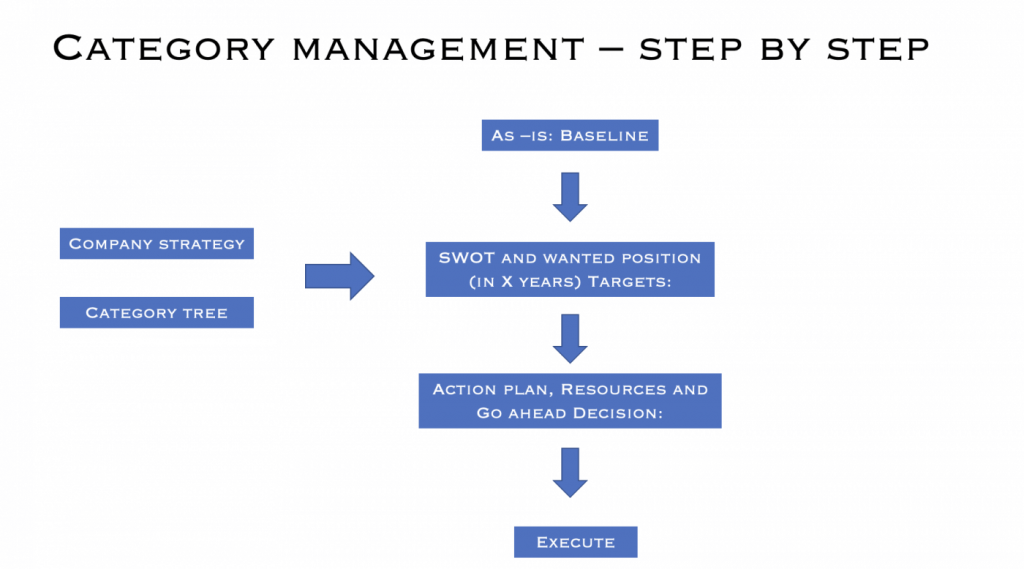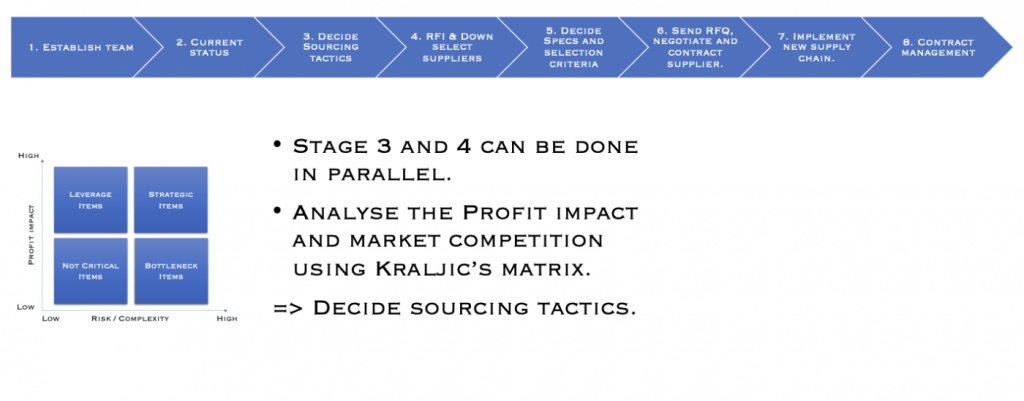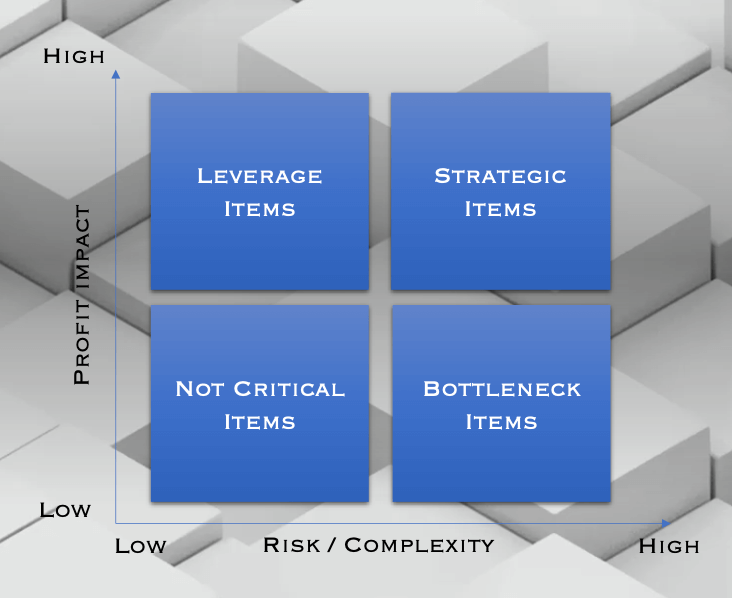Many buyers have heard about Kraljic Matrix. But how and when should the Matrix be applied? Let us discuss.
Content….
Who is Peter Kraljic?
Peter Kraljic is a name synonymous with innovation in the field of procurement and supply chain management. Born in the mid-20th century, Kraljic’s work has had a lasting impact on how companies approach purchasing strategies and manage their supply chains. His most notable contribution, the Kraljic Matrix, revolutionized procurement strategies worldwide and remains a fundamental tool in the field.
Kraljic’s educational background laid a solid foundation for his future career. He pursued higher education in economics and business, which equipped him with a deep understanding of market dynamics and organizational behavior. His academic achievements set the stage for his entry into the business world, where he quickly made his mark.
Throughout his career, Peter Kraljic held various positions in management and consultancy, but it was his work with McKinsey & Company that catapulted him to prominence in the field of procurement. While at McKinsey, Kraljic developed the Kraljic Matrix in 1983, a strategic tool designed to help companies analyze their procurement portfolio and develop a balanced, effective procurement strategy that minimizes supply risk and maximizes buying power.
The Kraljic Matrix categorizes procurement items based on two dimensions: the complexity of the supply market and the importance of purchasing to the company. This classification into four categories—non-critical items, leverage items, bottleneck items, and strategic items—allows companies to tailor their procurement approach to each type of item, ranging from routine purchasing to forming strategic partnerships.
Kraljic’s work emphasized the strategic role of procurement in achieving competitive advantage, urging companies to move beyond viewing purchasing as a mere operational function. He advocated for a proactive approach to supply chain management, one that anticipates changes in market conditions and leverages supplier relationships for innovation and growth.
Beyond the Kraljic Matrix, Peter Kraljic authored numerous articles and papers on supply chain management, procurement, and strategic sourcing. His insights into managing supply chain risk, building supplier relationships, and embracing technology in procurement processes have influenced generations of procurement professionals.
Today, Peter Kraljic is celebrated as a visionary in procurement and supply chain management. His legacy is not just in the tools and models he developed, but in the strategic mindset he instilled in procurement professionals. By urging companies to see procurement as a strategic function integral to their overall success, Kraljic has had a profound impact on how businesses operate in the global market. His contributions continue to guide and inspire procurement professionals around the world, ensuring his place as a pivotal figure in the history of supply chain management.
Explaining the Matrix.
The Kraljic Matrix is a strategic tool used by procurement professionals to categorize and manage their company’s purchasing portfolio based on the supply risk and the impact on financial performance. This matrix has become a cornerstone in strategic procurement and supply chain management, guiding organizations in developing sophisticated strategies to optimize their supply base and minimize vulnerabilities.
Understanding the Kraljic Matrix
The Kraljic Matrix divides goods and services into four quadrants based on two dimensions: the complexity of the supply market (supply risk) and the importance of the purchase to the organization (financial impact). These dimensions reflect the challenges procurement faces in balancing risk management with achieving competitive advantage. The four quadrants are:
- Non-critical Items: Low supply risk and low financial impact. These are standard items that are easily sourced from multiple suppliers. The focus here is on efficiency and automation of the purchasing process.
- Leverage Items: Low supply risk but high financial impact. These items can significantly affect the company’s financial performance but are available from several suppliers. The strategy is to leverage volume to achieve price reductions and favorable terms.
- Bottleneck Items: High supply risk and low financial impact. These items have few alternative suppliers, which might be due to the complexity of the product or market conditions. The goal is to ensure supply continuity, which might involve stockpiling, finding alternative materials, or developing new suppliers.
- Strategic Items: High supply risk and high financial impact. These are critical to the company’s success, often because they are a major cost driver or because they are critical to the production process. The procurement strategy focuses on developing long-term relationships with suppliers, often involving collaboration, partnerships, or joint ventures to secure supply and innovate.
Learn more in our course Get to know Kraljic and his matrix. After completing the course you will have an understanding of who Peter Kraljic is and the history of his Matrix, how to use Kraljic’s Matrix and in which procurement processes you apply Kraljic’s Matrix.
When should the professional buyer use Kraljic matrix?
In the processes Category management and Sourcing process you have good use of the Matrix. During development a Category Strategy following process steps are recommended.

In the mapping of baseline (As – is: Baseline), analyzes of the category by using Kraljic Matrix is recommended. Learn more about how to develop a category strategy in the course Category management – how to get started
In the sourcing process Kraljic’s matrix is used in step 3, when you decide how to approach the market.

It is necessary to understand the supplier market and the importance of the sourced product/service. By using Kraljic Matrix early in the sourcing process, it is possible to adapt the RFQ material to the sourcing tactics selected. Different tactics can be applied and you can learn more about tactics and Portfolio management in Paul Roger’s course Kraljic and Portfolio management. Kraljic Portfolio management connect the four quadrants (Leverage, Non critical, Strategic and Bottleneck) in Kraljic´s matrix to 8 relevant sourcing strategies.
The use of the Kraljic Matrix in developing a category strategy and as part of the sourcing process is a reflection of its enduring relevance and utility in the field of procurement and supply chain management. This strategic tool not only facilitates a deeper understanding of the procurement portfolio but also aids in prioritizing efforts and resources to maximize value and minimize risk. Reflecting on its application offers insights into its effectiveness and strategic value.
Strategic Insights and Prioritization
One of the primary advantages of employing the Kraljic Matrix in category strategy development is its ability to provide strategic insights into the procurement portfolio. By categorizing goods and services based on their supply risk and financial impact, procurement professionals can identify which categories require a strategic approach, which ones offer the greatest leverage opportunities, where to focus risk mitigation efforts, and where operational efficiency can be optimized. This categorization helps in prioritizing procurement activities, ensuring that efforts and resources are allocated where they can deliver the most significant impact.
Enhanced Supplier Management
The Kraljic Matrix also plays a crucial role in shaping supplier management strategies. For strategic and bottleneck items, where the risk is high, the matrix encourages the development of closer, more collaborative relationships with suppliers. This can involve joint development efforts, long-term contracts, and partnerships to ensure supply continuity and foster innovation. Conversely, for non-critical and leverage items, the focus might be on competitive bidding, volume discounts, and efficiency. This nuanced approach to supplier management enhances the overall value derived from supplier relationships.
Risk Management and Mitigation
A critical aspect of using the Kraljic Matrix is its emphasis on risk management and mitigation. By identifying categories that are vulnerable due to high supply risk, procurement professionals can proactively develop strategies to mitigate these risks. This might involve diversifying the supplier base, developing alternative materials or products, or increasing inventory levels for bottleneck items. For strategic items, risk mitigation might focus on developing long-term partnerships with key suppliers or investing in technology to enhance supply chain visibility and resilience.
Dynamic and Flexible Strategy Development
The dynamic nature of the Kraljic Matrix allows for flexible strategy development. Market conditions, supplier capabilities, and business needs are constantly evolving, and the matrix provides a framework for regularly reassessing the procurement portfolio and adjusting strategies accordingly. This adaptability is crucial in responding to changes such as new market entrants, supply chain disruptions, or shifts in business strategy.
Challenges and Considerations
While the Kraljic Matrix is a powerful tool, its effective use requires careful consideration. Accurate and comprehensive data on spending, supplier performance, and market conditions are essential for correctly categorizing items and developing effective strategies. Additionally, the matrix should not be used in isolation; it should be part of a broader strategic procurement and supply chain management approach that considers other factors such as sustainability, quality, and innovation.
Summary
In conclusion, the Kraljic Matrix is a valuable strategic tool for developing category strategies and guiding the sourcing process. It facilitates a deeper understanding of the procurement portfolio, aids in strategic prioritization, enhances supplier management, and focuses on risk mitigation. However, its effectiveness is contingent upon accurate data, regular reassessment, and integration with broader procurement and supply chain strategies. By applying the Kraljic Matrix thoughtfully and strategically, procurement professionals can significantly contribute to their organizations’ competitive advantage and operational resilience.
